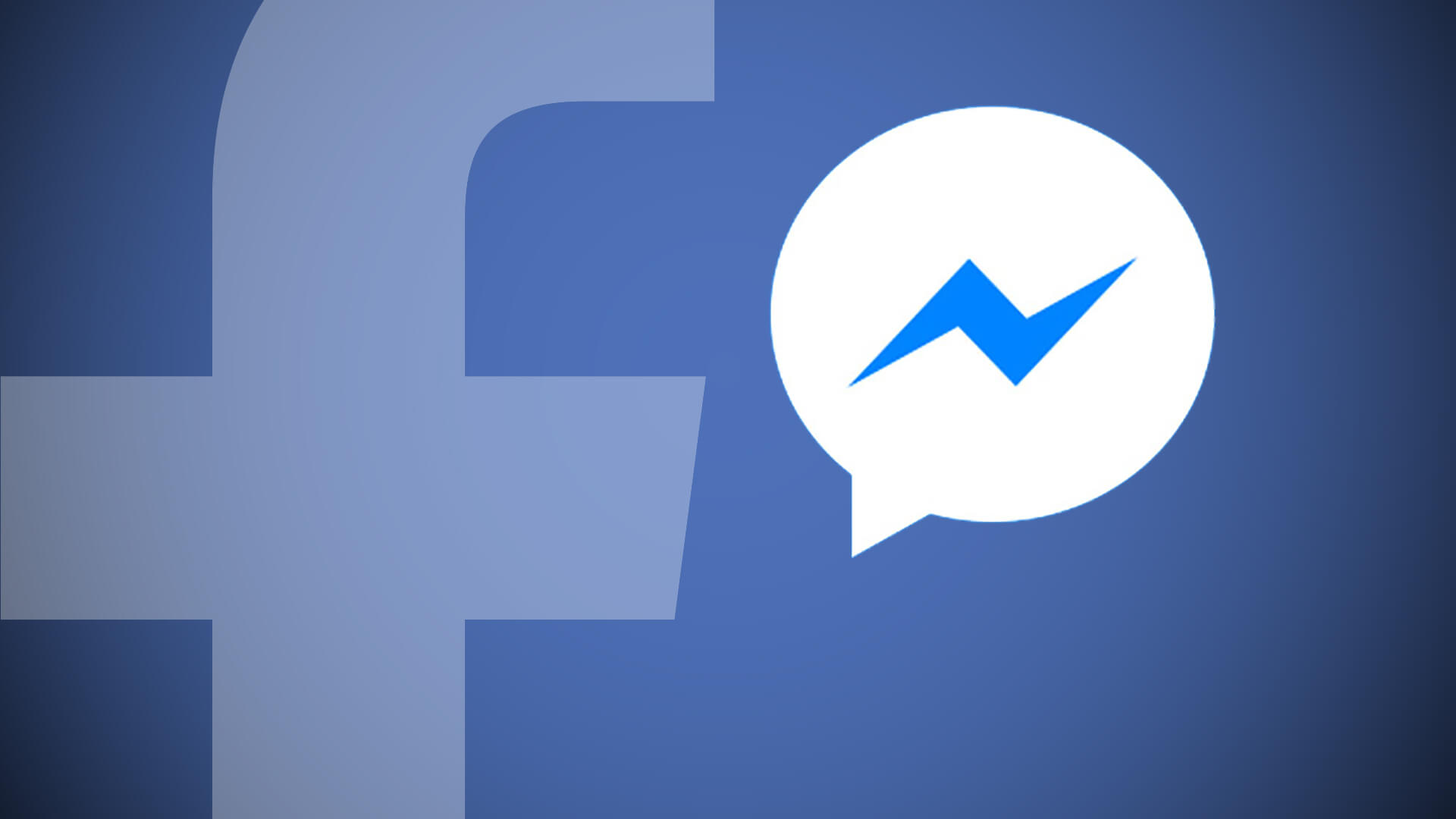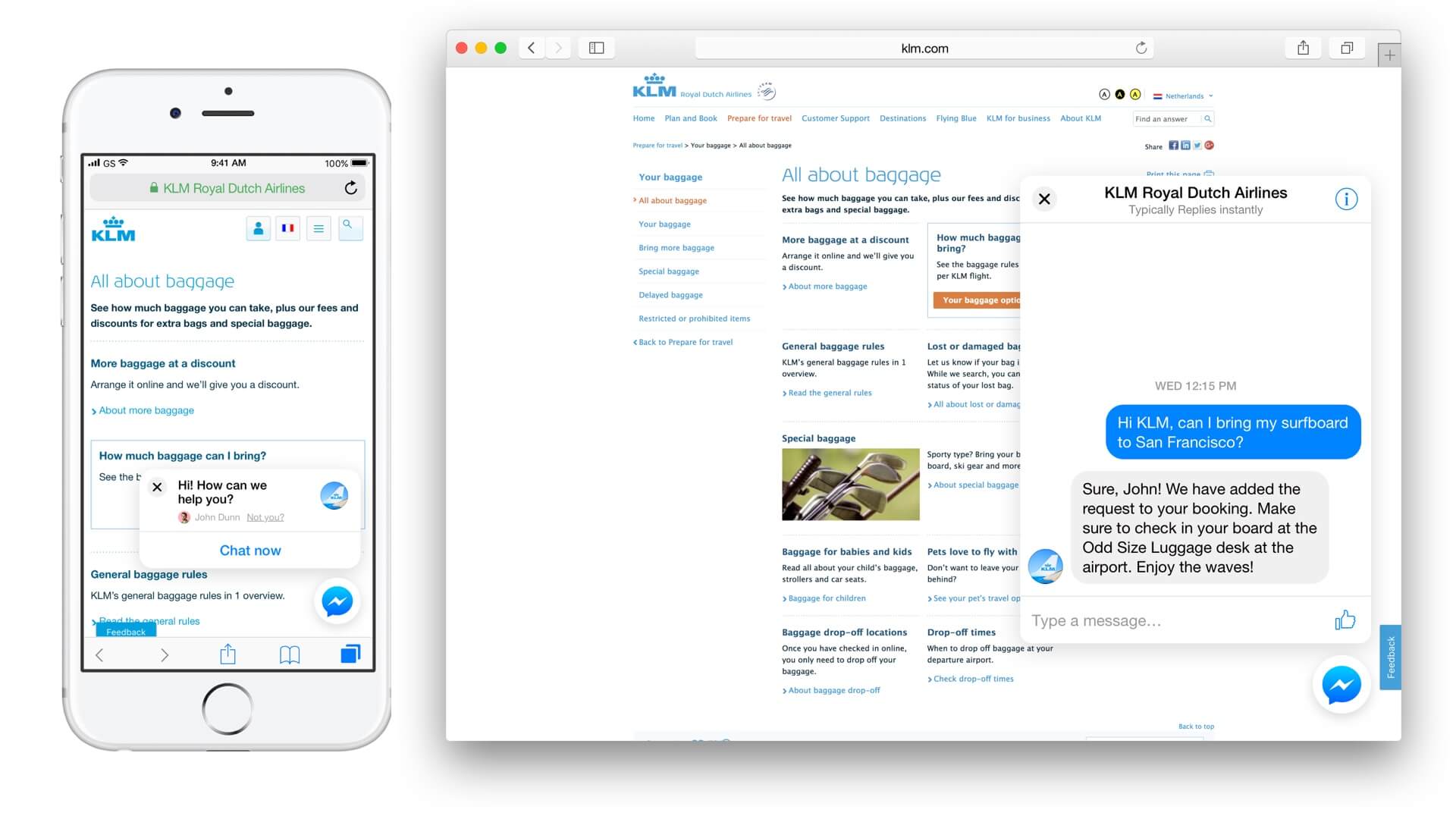Facebook Messenger can now power chat on brand sites
Messenger’s Customer Chat plugin may help the messaging service realize its potential as marketers’ new CRM channel.

People are still coming around to the idea of chatting with businesses through messaging apps. But many consumers already live chat with businesses on company sites, which is where Facebook Messenger is now extending its platform.
Messenger is rolling out a chat plugin for companies to use Facebook’s messaging service to power the chat features on their own sites, the company announced on Tuesday. Called Customer Chat, the tool is currently in testing with a limited number of companies, but businesses can apply to be added to the waitlist.
How Customer Chat works
When a person visits a Customer Chat-enabled site, they’ll see a Messenger icon where the normal live chat icon would typically appeared. Clicking on the icon will open a Messenger thread on the page. Users will need to be logged in to Facebook Messenger in their browser before they can message the business. From that point on, the experience largely mirrors Messenger. Businesses can send links, photos and videos as messages and have people respond using quick-reply buttons.
“It’s taking the best of live chat and bundling it with the best of Messenger,” said Kemal El Moujahid, lead product manager for Messenger’s developer platform.

KLM Royal Dutch Airlines is among the first businesses to use Messenger to power chat on its own site.
Personalization powered by Facebook user IDs
A reason businesses may opt to use Messenger on their own sites is that doing so ties in with the rest of Messenger and Facebook’s other platforms. When a person messages a business using Customer Chat, that business will receive a page-scoped user ID that can be used to retrieve information like a person’s first and last name and can be cross-referenced with a company’s customer database. As a result, businesses will be better able to personalize these on-site chats.
“The problem with live chat solutions is that they have been lacking context, identity and continuity. If I start chatting on someone’s website, that business doesn’t know who I am. If I have past history with that business, they don’t know it. And if I leave the site, the connection is lost,” said El Moujahid.
Messenger as a new CRM marketing channel
Any thread started on a Messenger-powered site also exists on Messenger. That means that if someone messages a brand on its site, brands will be able to follow up on that chat within Messenger. And since businesses can set up Customer Chat to let them know on which pages of their site a person started a chat, brands can use these on-site interactions to inform their Messenger conversations and establish more of an ongoing relationship. That could also establish Messenger as a new CRM channel for marketers, one that may rival, if not replace, email.
Additional updates
Facebook’s Customer Chat feature isn’t the only announcement that Messenger is making on Tuesday. The platform is also adding an option to attach a call-to-action button to images, GIFs and videos sent as messages, as well as a way to see how people have rated a business’s Messenger account through its corresponding Facebook Page’s settings.
For businesses using Messenger’s subscriptions feature to automatically send out message blasts, Messenger is making it easier to contact multiple accounts. Through a new Broadcast API, these accounts can send a message to everyone that’s connected to them without having to push messages out in batches.
Contributing authors are invited to create content for MarTech and are chosen for their expertise and contribution to the search community. Our contributors work under the oversight of the editorial staff and contributions are checked for quality and relevance to our readers. MarTech is owned by Semrush. Contributor was not asked to make any direct or indirect mentions of Semrush. The opinions they express are their own.
Related stories
New on MarTech